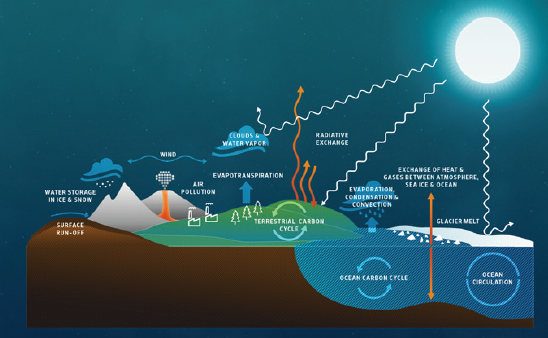
Active And Passive Remote Sensing Ppt Pdf
Introduction to Remote Sensing. Table 1: Major regions of the electromagnetic spectrum. X- ray. 0. 0. 3 to 3. Entirely absorbed by the Earth's atmosphere and not available for remote sensing. Ultraviolet. 0. 0.
Wavelengths from 0. Earth's atmosphere. Photographic Ultraviolet. Available for remote sensing the Earth. Can be imaged with cameras and sensors.
We provide excellent essay writing service 24/7. Enjoy proficient essay writing and custom writing services provided by professional academic writers.
Pacific High High pressure system that develops over the central Pacific Ocean near the Hawaiian Islands. OP AMP APPLICATIONS 4.2 seem equally logical to consider a thermocouple active, in the sense that it produces an output voltage without external circuitry, however. Passive & Active Design CIBSE Building Simulations GroupCIBSE Building Simulations Group Peter A. Brown CEng, MBA October 2010. We discuss the evolution and state-of-the-art of the use of Unmanned Aerial Systems (UAS) in the field of Photogrammetry and Remote Sensing (PaRS).
Visible. 0. 4 to 0. Available for remote sensing the Earth. Can be imaged with cameras and sensors. Near and Mid Infrared.
Available for remote sensing the Earth. Can be imaged with cameras and sensors.
Thermal Infrared. Available for remote sensing the Earth. This wavelength cannot be captured by film cameras. Sensors are used to image this wavelength band.
Micowave or Radar. Longer wavelengths of this band can pass through clouds, fog, and rain. Images using this band can be made with sensors that actively emit microwaves.
1 Intersil How to Charge Supercapacitor Banks for Energy Storage Introduction Supercapacitors (SCs), also known as ultracapacitors and electric double -layer. Rapid Response has been providing global swath imagery from the Moderate Resolution Imaging Spectroradiometer.
Radio> 1. 00 centimeters. Not normally used for remote sensing the Earth. Traditional aerial photographs were black and white pictures based on camera and film. Such photographs related to one region of the EM spectrum. Satellite images are generally captured.
A sensor often records simultaneously in several different regions of the. The regions of the spectrum scanned are called . Fear 2 Update 1 05 Skidrow Reloaded. For example, an image or band scanned in the visible light region of. With multi- bands various color composite images can be created. A single band image shows features in various grey tones but if several images are combined. A true color composite is based on using the red, green, and blue portions of the visible region.
EM spectrum. This type of composite relates to what the human eye would see if a person was on a satellite. Earth. Figures 4 A, C, and D. A false color composite generally enhances certain features on an. Using different color composites is one. Earth. FIGURE 4: Color Composites.
RADIOMETRIC AND GEOMETRIC RESOLUTIONSDigital remote sensing deals with two types of resolutions: radiometric (spectral). Radiometric resolution is the number of levels that a sensor can record spectral.
Such information generally ranges from 0- 2. The most common range is 0- 2. These numbers are integer values. This value. represents the degree of reflective or emitted energy recorded by a sensor for a particular ground spot. Earth. Generally this resolution is expressed in terms of a pixel. The pixel size of the Enhanced Thematic Mapper sensor on Landsat 7 is 3.
Earth. In comparison, a sensor entitled AVHRR has a pixel of 1. Quick. Bird satellite possesses a 6. Geometric resolutions vary greatly and are defined loosely as being low, moderate, and high. Such an image provides. Earth. An example of a low resolution image is Figure 6, which shows. African desert and blanketing hundreds of thousands of square miles.
Atlantic Ocean with a dense dust. FIGURE 6: African Dust Storm (Low Resolution). Figure 7 is a representation of an American football field that has superimposed on it several. The Landsat 7 ETM+ sensor records images at a 3.
It would take 5. 5 Landsat 7 pixels to cover the area of a football field. One would not be. The four images shown in Figure 4 are Landsat. They provide more detailed information than the low resolution image of the desert dust storm in Figure. An image. with a 6. It would take 8,3.
With this number of pixels one would be able to see a great amount of detail about the field. Figure 8. is a high resolution image of an actual football field. This image was acquired by a digital aerial camera and. FIGURE 7: Pixel Size Comparison. FIGURE 8: American Football Field (High Resolution). Remote sensing imagery has many applications in cartography, land use and cover, agriculture.
In order to use such imagery, one must have considerable knowledge about. Earth. Since. the Earth. Remote Sensing of the Environment: An Earth Resource Perspective. Person Prentice Hall. Lillesand, Thomas M.
Remote Sensing and Image Interpretation. John Wiley and Sons, Inc. Sabins Jr., Floyd F, 1. Remote Sensing: Principles and Interpretation. H, Freeman and Company.